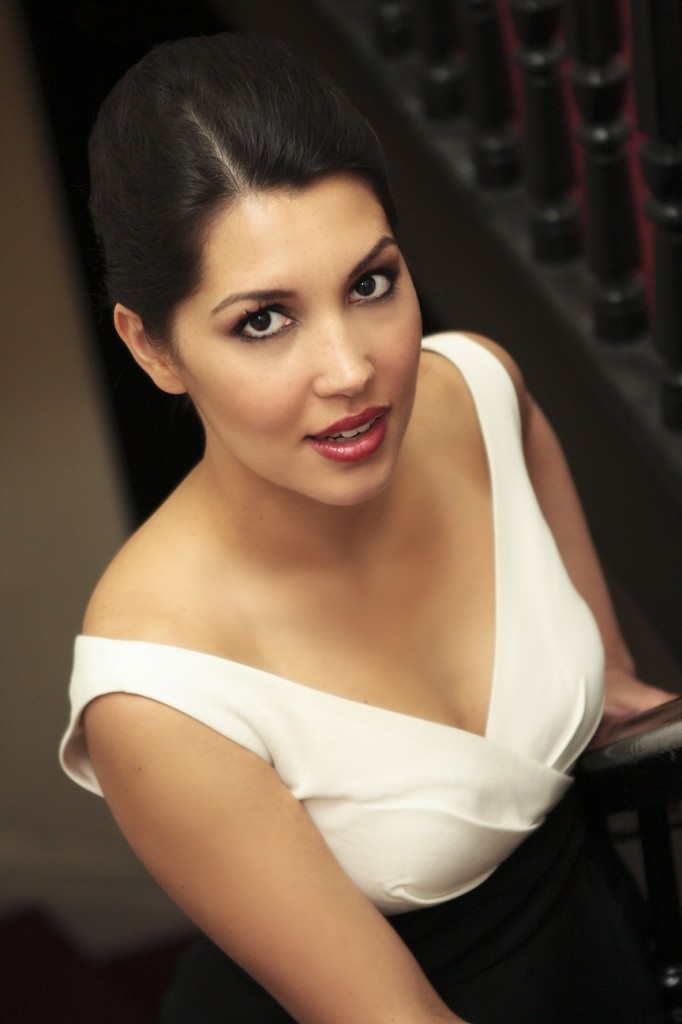Boston Baroque ushers in the new year with a Pergolesi rarity

Sara Heaton sang the role of Serpina in Boston Baroque’s New Year’s Eve performance of Pergolesi’s “La serva padrona.”
If the upcoming year is anything like Boston Baroque’s New Year’s Eve concert, music will be tastefully creative, the young will cleverly update the work of their forebears, and the poor will outfox the rich for their goodies.
It’s unlikely to happen, but for one evening at Sanders Theatre, conductor Martin Pearlman and his distinguished core of period-instrument musicians made it seem possible. Concertos by Corelli, Marcello (with help from Bach) and Telemann preceded a comic opera by Pergolesi, bracketing a champagne reception at intermission that rang in the new year with in festive historically informed style.
Pergolesi’s La serva padrona (The Servant Turned Mistress) was originally a comic intermezzo for the longer opera seria Il prigionier superbo (The Proud Prisoner). The larger work is now forgotten, and La serva padrona remains. The silly plot shows its subsequent influence everywhere: just imagine if Zerlina were a bit more clever, and had actually married Don Giovanni.
Baritone David Kravitz sang the role of Uberto, the hapless bachelor browbeaten into marrying his maidservant. Soprano Sara Heaton stepped in smartly for the ailing Courtney Huffman as Serpina, creating a happy pairing between two versatile singers with facile instruments and natural comic ability. Actor Remo Airaldi played the mute foil as Uberto’s man Vespone, his only instrument being his puckish face.
What mattered most were the skills of Kravitz and Heaton, who just a few short weeks ago were heard singing strikingly different music (Kravitz in Ravel’s L’enfant et les sortilèges with the BSO; Heaton singing the impossible Michael Tippett opera A Midsummer Marriage with Boston Modern Orchestra Project). The accompanying music, well played and directed, was simple, and the effortless singing, and stellar acting by Heaton and Kravitz made it all a compelling entertainment.
Given only a few days to learn the part and the blocking, Heaton carried the score with her. She slipped the score into a cover of Modern Bride as a sight gag, to great effect. Her timing was impeccable, she sings and she sang with such an effortless and colorful tone that all would have been forgiven even if it wasn’t. Let’s hope 2013 has her creating many more substantial roles.
Any of the dozen concerto grossi from Arcangelo Corelli’s opus 6 bears up to the scrutiny of three centuries (published 1714). Pearlman chose the seventh, in D major, set for a spotlighted concertino group of violins (concertmaster Christina Day Martinson and principal second Julie Leven) and cello (Sarah Freiberg), bolstered by a ripieno ensemble of strings and harpsichord. Of its five elegant movements, highlights included a pensive Andante lento with the trio of soloists woven together, which alertly jumped to a vigorous canon marked Allegro, the soloists dueling Baroque style with overlapping lines.
Alessandro Marcello’s Oboe Concerto in D minor was transcribed and enhanced by Bach as a youthful harpsichord exercise; Bach’s keyboard ornaments were incorporated into soloist Marc Schachman’s treatment of the work, especially in the compelling Adagio. With that movement, and the nimble Presto that followed, Schachman shaped this challenging work. Tricky breathing and tight runs in the high registers caused some missteps, but precise leadership from Pearlman kept the ensemble/soloist juxtapositions alertly in perspective.
Christopher Krueger (flute) and Aldo Abreu (recorder) provided the sparkle before the intermission party, performing one of the versions of Telemann’s Concerto for Duo Instruments, TWV 52. Telemann pioneered the incorporation of vernacular styles into serious composition, and, as Pearlman pointed out, invested this concerto with a spirit of Polish folk rhythms and a bagpipe-sounding drone. Of particular appeal was the slow second movement, bolstered by a three-note pizzicato ostinato figure underneath a charming duet excursion by the soloists; and the finale, a rigorous romp with the drone figure in the low strings, a dotted statement from the ensemble over that, and the soloists exploring imaginative lines above it all.
The program will be repeated 3 p.m. January 1. bostonbaroque.org
Posted in Performances